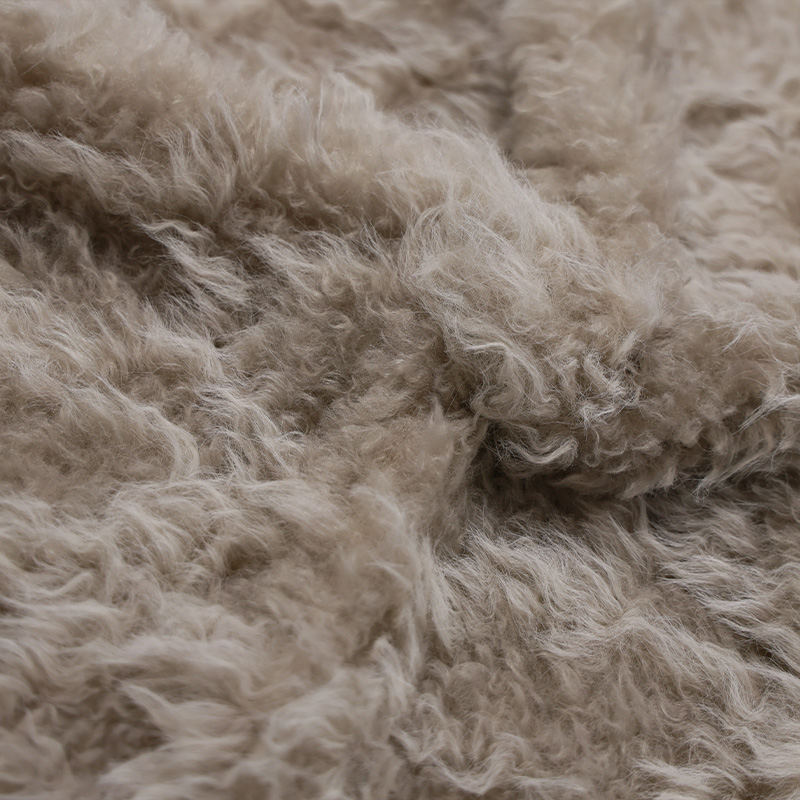











In the dynamic world of fashion and textiles, market trends are constantly evolving, driven by consumer preferences, technological advancements, and economic factors. One notable trend that has gained significant traction in recent years is the rise of imitation lamb fur. This artificial material offers a range of advantages that make it an appealing choice for designers, manufacturers, and consumers alike. This article explores the key benefits of imitation lamb fur in the context of fashion and textiles.

Versatility in Design and Application
Imitation lamb fur boasts remarkable versatility, making it a favorite among designers. Unlike natural fur, which is受限 by the growth patterns and textures of the animal, imitation fur can be crafted to meet specific design requirements. This allows for a wide range of colors, textures, and lengths, enabling designers to create unique and eye-catching pieces that cater to diverse tastes and preferences. From cozy jackets and stylish handbags to home decor and automotive interiors, imitation lamb fur can be seamlessly integrated into various fashion and textile applications.
Durability and Maintenance
Durability is another significant advantage of imitation lamb fur. This material is designed to withstand the rigors of daily wear and tear, maintaining its appearance and texture over time. Unlike natural fur, which can be prone to shedding and wear, imitation fur retains its softness and shine, even after multiple washes and uses. This makes it an ideal choice for high-traffic areas or items that require frequent cleaning, such as car seats or upholstery.
Cost-Effectiveness
The cost-effectiveness of imitation lamb fur is another factor that has contributed to its popularity. Natural fur can be incredibly expensive, often placing it out of reach for many consumers. Imitation fur, on the other hand, offers a luxurious look at a fraction of the cost. This makes it an accessible option for fashion-conscious individuals who want to embrace high-end styles without breaking the bank. Manufacturers can also produce imitation fur in larger quantities, further reducing costs and making it a more viable option for mass-market applications.
Ethical Appeal
In today's socially conscious world, ethical considerations are becoming increasingly important to consumers. Imitation lamb fur presents a compelling alternative to natural fur, addressing these concerns without compromising on style or quality. By choosing imitation fur, consumers can make more conscience-driven purchasing decisions, contributing to a more humane and sustainable fashion landscape. This ethical appeal is particularly resonant among younger generations, who are increasingly prioritizing sustainability and animal welfare in their purchasing choices.
Innovation and Technological Advancements
The manufacturing process of imitation lamb fur is constantly evolving, incorporating innovative technologies and textures. Manufacturers are refining their techniques to create materials that mimic the softness, warmth, and touch of real fur more convincingly. This focus on innovation ensures that imitation lamb fur remains a viable and appealing option for those seeking high-quality, ethical fashion choices. As technology continues to advance, it is likely that imitation fur will become even more realistic and durable, further enhancing its appeal in the market.
Conclusion
In conclusion, imitation lamb fur offers a range of advantages that make it an appealing choice for fashion and textile applications. Its versatility in design and application, durability and maintenance, cost-effectiveness, ethical appeal, and innovative technologies combine to create a material that is well-suited to the demands of modern consumers. As market trends continue to evolve, it is likely that imitation lamb fur will play an increasingly significant role in shaping the future of fashion and textiles. Whether you're a designer, manufacturer, or consumer, the benefits of imitation lamb fur are worth considering as you navigate the ever-changing landscape of fashion and textiles.